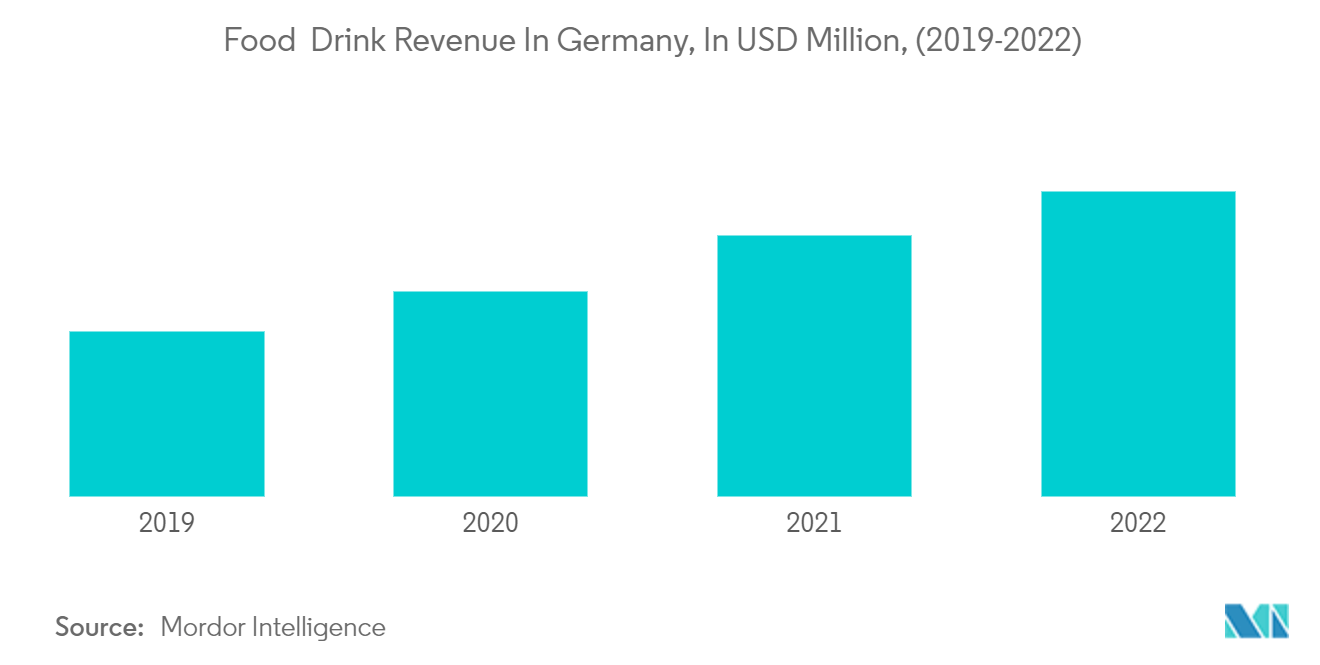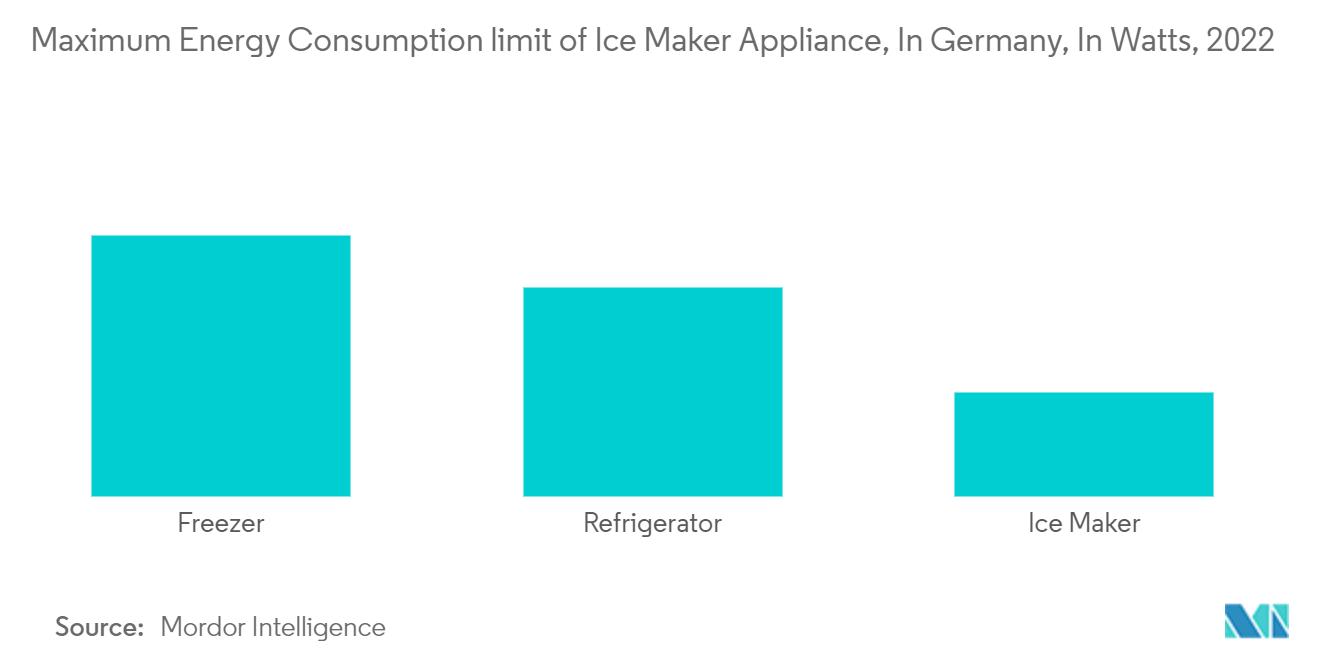Market Trends of Germany Countertop Ice Makers Industry
Food And Beverage Consumption Driving The Market
- Germany exists as Europe's largest market for soft drinks and beverages, with food and beverage output having a growth of 2% last year. The frozen food market demand, which requires a large amount of ice from retailers to wholesalers, is observing a continuous increase in Germany.
- With Its ice cubes, ice makers are helping restaurants to keep their food fresh for a long time and making drinks taste better with different types of ice cubes designed for different purposes.
- Post-COVID, revenue growth of the hotel industry in Germany is increasing, with ice makers making it easy for customers to get their ice and keep costs down for hotels as well. The hotel's guests' use of ice machines for everything from serving cocktails to filling up their coolers is driving business opportunities for ice maker manufacturers in the country.

Technological Innovation and Energy Efficient Products Usage is Increasing
- To make ice makers more efficient, different categories of products are being launched with air-cooled and water-cooled technology. Energy star-rated ice maker products are available in the market, differentiating themself from other ice maker machines and saving electricity charges for users as well.
- With the advent of COVID-19, sanitation and hygiene became important factors that buyers look over before selecting their ice machines because manufacturers are trying to develop reliable machines which not require a lot of cleaning.
- For people preferring to consume beverages at home, countertop ice makers have emerged as an efficient option for providing different types of ice in batches. In comparison to refrigerators using 100W to 400W, usage of electricity by ice makers exists at a sufficiently low range of 100W to 200W, making them a preferable choice over refrigerators for ice making.


